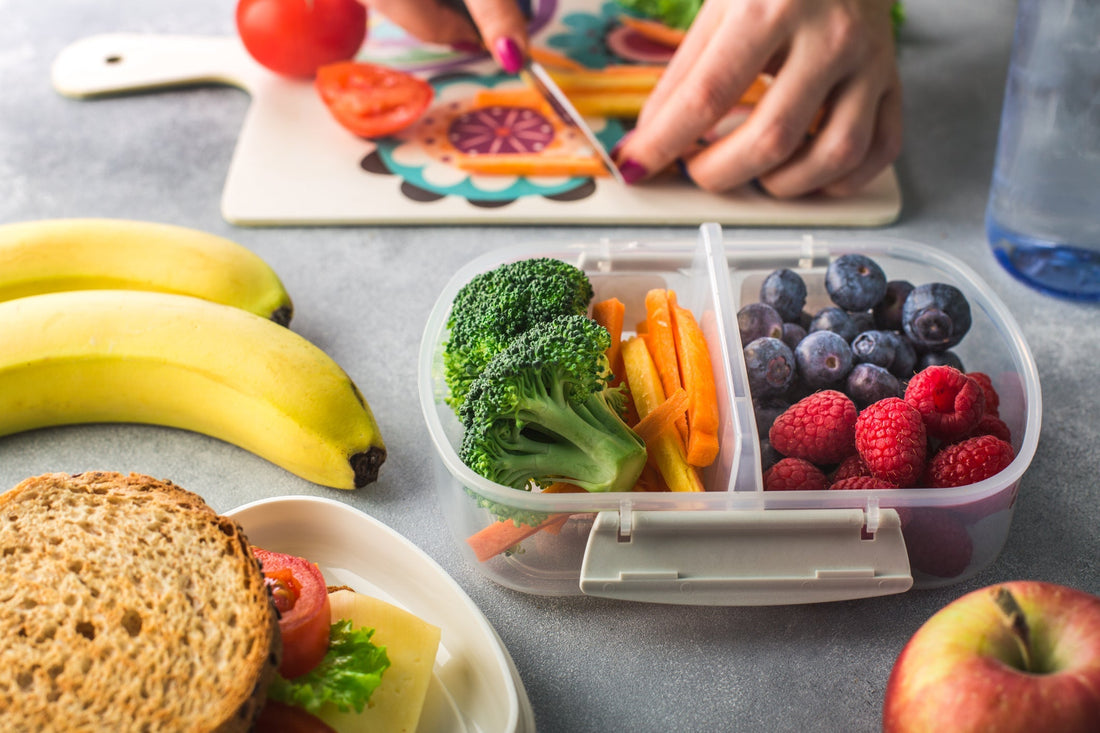
Ultimate guide to packing lunchboxes from a nutritionist
Share
A healthy breakfast will set them up for the day, while a healthy lunchbox is the next step to ensuring they get the nutrition they need to keep them going through the peak play and learning period.
To help set them on the right track, follow our top 5 suggestions for the ultimate lunchbox to ensure your kids are getting the most nutritious food to keep them going all day long!
- Choose a variety of healthy foods
Be sure to include a combination of protein, whole grains, vegetables, fresh fruit and dairy. If your child has food allergies or food intolerances, use appropriate alternatives you’ve found that work well in your child’s individual diet.
- Get the kids involved
Packing a nutritious, creative lunchbox doesn’t need to be a chore – nor does it need to be your sole responsibility. Get the kids involved by inviting them to choose between healthy options, and even involve them in (safely) cutting up food using either a child-friendly knife or even cookie cutters – turning their food from boring to fun. Encouraging child involvement and choice will also help to minimise uneaten food at the end of the day.
You can also get kids involved by inviting them to cook with you. Perhaps it can be a Sunday afternoon family fun activity. Getting kids involved in cooking gives them a greater appreciation of food variety as well as the variability in food taste and textures. Also remember to encourage kids to try food as they cook it. By making food fun, it helps to diversify a child’s palette and ultimately the number of foods they accept.
- Pack the right amount
Sometimes more is just more. Resist the temptation to overpack your child’s lunchbox in the hope there’s something in there they’ll eat. By selectively limiting their choice, and providing options from all the main food groups, you’ll be indirectly encouraging diversity. It’s also important to stick to appropriate portion sizes for kids. Remember, in addition to encouraging healthy eating, you’re also trying to teach them positive food habits for adulthood – diversity in food groups, flavours and textures, as well as not overeating simply because the food is there. The Australian Dietary Guidelines provide some great resources on how much your child should eat for their age.
- Don’t overcomplicate things!
Leftovers are an easy way to pack a child’s lunchbox with food you know they’ll love. When you’re cooking dinner, make a little extra to include in their lunchbox the next day. Some great transferrable options include pastas, quiche, falafel, salads and even rice paper rolls. Remember to be mindful of unrefrigerated food items and either pack an ice-brick or place food in a temperature friendly container to help avoid it spoiling.
- Mix it up
Kids tastes will change and grow as they get older. Resist the temptation to continue to pack the same things day in and day out simply because they eat them. Kids will only learn to grow and appreciate different tastes and textures the more they are exposed to them.
If your child does a great job with their lunchbox, but their diet is still a work in progress and needs a little “topping up” of some of the more important vitamins and minerals, consider a multi like Herbs of Gold Children’s Multi Care. This great tasting strawberry-vanilla flavoured chewable tablet contains 21 important vitamins and minerals supporting general health and wellbeing in children.
